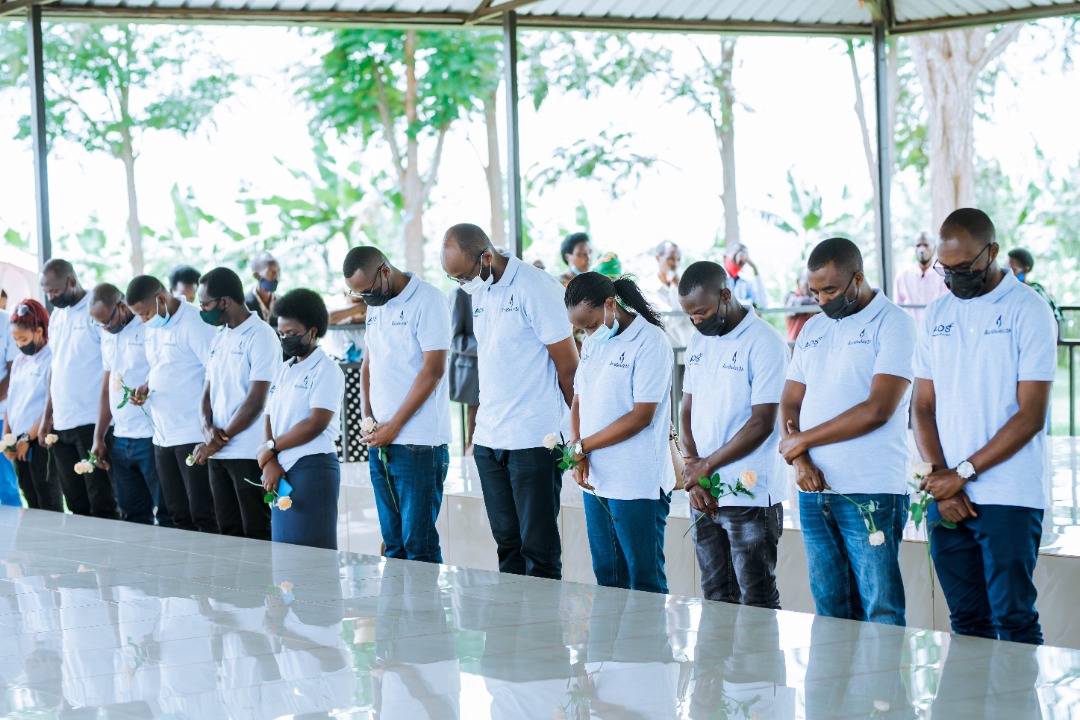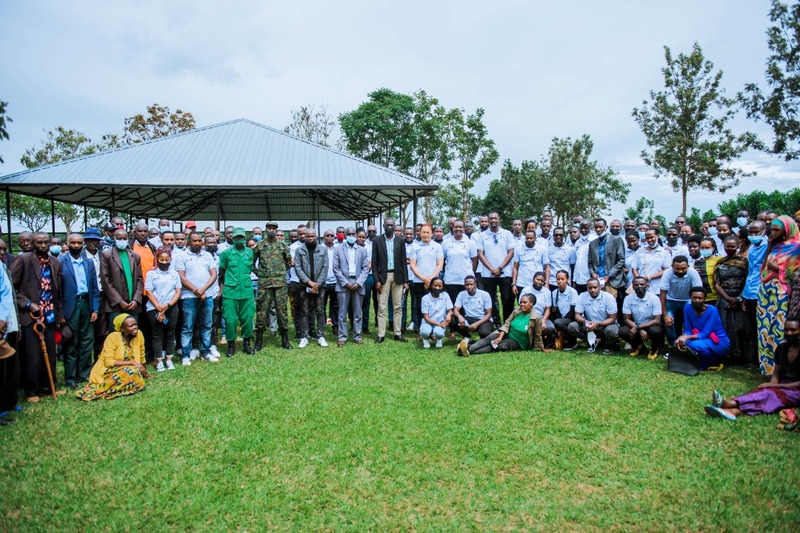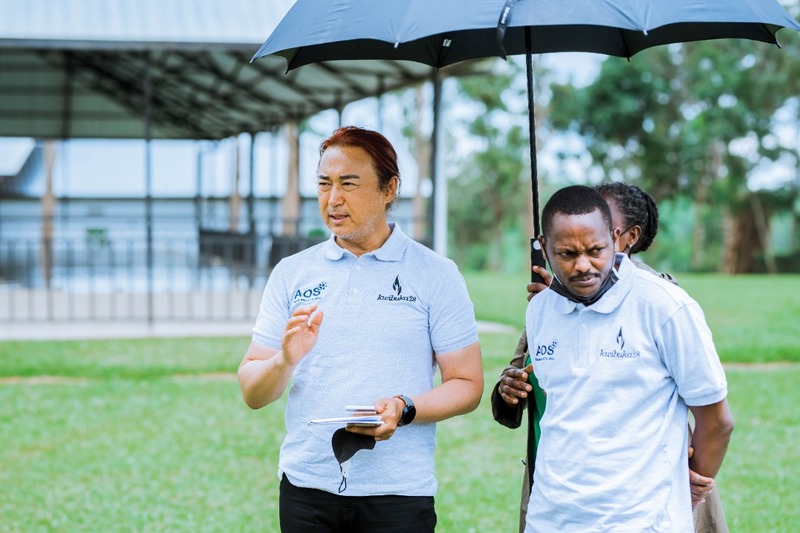The Management and Staff of AOS donated 700 iron sheets to the families of genocide survivors in Ngoma district as part of the 28th commemoration of the 1994 genocide against the Tutsi.
Also to mention, an envelope with considerable amount of money was also provided to help renovate Rukumberi Genocide Memorial.
AOS Limited is a joint venture company between the government of Rwanda and Korea telecom which operates the National Data Centre of Rwanda and offers various quality ICT services.
The support was provided on Friday, April 29, during a ceremony to pay tribute to the victims of the genocide against the Tutsi laid at Rukumberi Genocide Memorial in Ngoma district.

Management and staff of AOS Ltd pay tribute to victims of the Genocide against the Tutsi at Rukumberi Memorial.
At the memorial, the staff also laid wreaths to the remains of the victims laid at the site.
Delivering his remarks, the Chief Executive of AOS, Seong Woo Kim, said that the day is a symbol of tripartite aspects; remembrance, reflection and commitment.
“This is an important occasion to show solidarity with survivors of this dark chapter in human history. We want to reaffirm that the survivors who are marked for life, in their flesh and soul, are not alone, so remembering the lost loved ones is a moral obligation to all of us,” he reiterated.
He added: “From these lessons, let us transform history into lessons of humanity that are relevant to our societies today. Remembrance is an opportunity for the younger generations to get more insights about the history of their country, fight ethnic segregation and participate more in activities that promote humanity, peace, unity and inclusion,”.
Young people should know the fundamental truth that we are all created equal, he continued, and that we have certain undeniable rights that include right to life which should not be taken away by anyone as it happened to innocent men, women and children 28 years ago.
Seong also highlighted that 28 years might seem long, but stressed that such memories can hardly fade away and survivors will never forget what happened to them and neither should others.
Rukumberi Memorial site is a resting place to over 40,000 genocide victims and is among the areas that experienced the most gruesome atrocities during the Genocide.
Long before the 1994 Genocide against the Tutsi, Tutsi families were relocated to the formerly isolated area by the former regime with the intention of being killed by the poor living conditions and disease, including the African sleeping sickness caused by the tsetse flies.

AOS Ltd joined residents of Ngoma district in remembrance of over 40,000 victims at Rukumberi Memorial. / Courtesy

AOS Ltd handed over an envelope of money that will help renovate Rukumberi Genocide Memorial. / Courtesy

The Chief Executive of AOS Ltd, Seong Woo Kim, delivering remarks on April 29 at Rukumberi Memorial. / Courtesy


